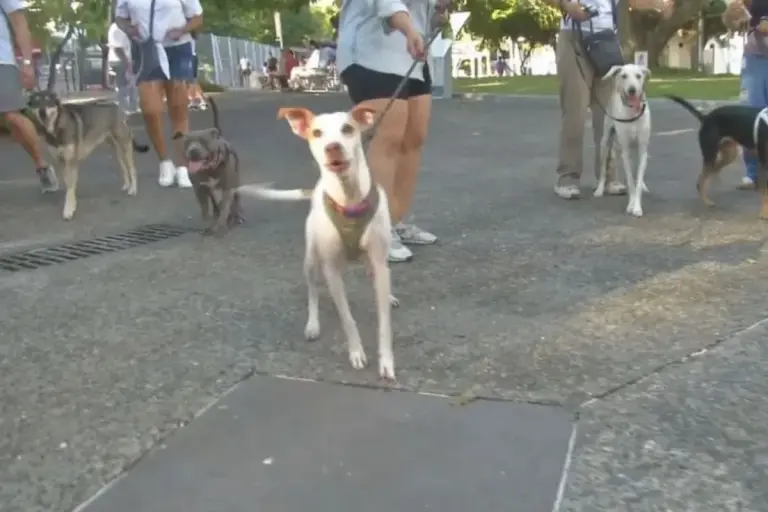PANAMA CITY, PANAMA – Dozens of pet owners organized a protest walk through Andrés Bello Park and surrounding areas in the El Cangrejo district this week. They are demanding that local authorities finally approve a long-delayed project to expand the park’s designated dog area.
The demonstration aimed to pressure the local Community Board (Junta Comunal) and the Panama Municipality to act on a pre-existing expansion plan. Organizers argue the current dog park is too small for the neighborhood’s growing pet population.
Protest leaders confirmed the expansion project was formally presented to the Community Board during the previous administration. The proposal includes detailed architectural designs created by a local resident to improve safety and usability.
Residents Present Pre-Designed Park Expansion Plan
The protest highlighted a specific, fully-designed plan for the park’s improvement. According to organizers, an architect who lives in the area created professional renderings for the project at no cost.
“There is a project that was presented to the Community Board from the previous administration, but they have not told us anything,” said Any Sosa, a spokesperson for the pet owners. “That was an architect who is also a resident here; she designed it with a render and everything beautiful, so that the dogs can relieve themselves and people can be together with their pets, enjoying the afternoons here.” [Translated from Spanish]
The proposed design addresses the primary concern that the current designated area is insufficient. It aims to create a space where pets can exercise safely without interfering with other park visitors, including children.
Formal Request for Designated Dog Area
Protest organizers have made a clear, specific request to local authorities. They seek official designation of the larger space they currently use informally as the permanent, exclusive dog area.
“The group requests that the space that we are currently using for our pets, where they can be safer and more comfortable, which is a little larger than the one currently designated, be the exclusive and designated area for them,” said another spokesperson, Guille Tejada. “There is already a process in the current Community Board that previously has the approval of the previous administration.” [Translated from Spanish]
This formal request indicates the proposal has already passed preliminary approval stages. The project now awaits final authorization from the current administration to proceed with implementation.
Pet Owners Address Community Cleanliness Concerns
During the protest, organizers also responded to criticism from some residents about park cleanliness. They acknowledged that while most pet owners are responsible, a minority fail to clean up after their animals.
The spokespeople emphasized that the majority of dog owners diligently clean up after their pets. They suggested that a formally designated and properly maintained area would encourage better habits from all users.
This response comes amid broader community discussions about shared public spaces. The tension reflects challenges facing many urban neighborhoods with limited green areas.
Growing Pet Population Drives Demand for Better Facilities
The protest underscores a significant demographic shift in the El Cangrejo area. The number of pets, particularly dogs, has increased substantially in recent years, creating demand for improved amenities.
Andrés Bello Park serves as a crucial green space for this densely populated urban neighborhood. The current dog park area was designed for a smaller pet population and can no longer accommodate daily users comfortably.
The proposed expansion would allow better separation between dog recreation areas and spaces used by children and other park visitors. This would improve safety and enjoyment for all community members.
Next Steps for the Park Expansion Project
The protest represents an escalation in community efforts to secure park improvements. After months of informal requests, residents are now taking public action to draw official attention to their cause.
The Community Board and Panama Municipality face increasing pressure to address the legitimate concerns of tax-paying residents. The existence of a professionally designed plan removes the common bureaucratic obstacle of project development costs.
With the architectural work already completed pro bono, the main remaining barriers are administrative approval and funding allocation for construction. Protest organizers expressed hope that their public demonstration would accelerate the decision-making process.
For more information about municipal park projects, visit the Panama Municipality website. Details about community board procedures are available through the National Association of Corregimientos.



